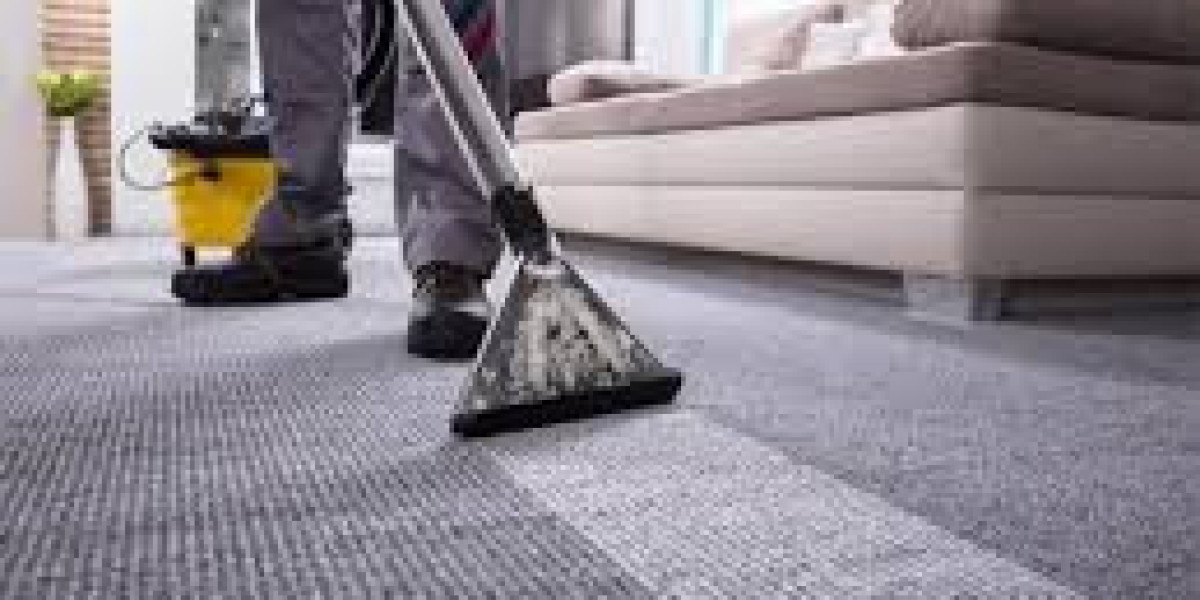Carpets in industrial spaces take more of a beating than a piñata at a kid's birthday party. Between muddy boots, spilled coffee, forklift tires, and who-knows-what-else, keeping them clean is no small task. But don’t worry—we’re diving into industrial carpet cleaning solutions that actually work, won’t break the bank, and won’t make your janitor cry.
Let’s break it down and see how to tackle carpet chaos the smart way.
What Makes Industrial Carpet Cleaning So Different?
Cleaning a carpet in your living room is one thing. Cleaning 10,000 square feet of carpet in a warehouse? That’s a whole other monster.
Industrial Carpet = Heavy-Duty Dirt
Industrial carpets don’t just collect dirt—they hoard it. Grease, oil, heavy foot traffic, and even chemicals are common culprits. Regular vacuums and DIY hacks simply don’t cut it here.
"If you think your office carpet is clean, try walking barefoot on it. Just kidding—don’t. Seriously."
Types of Industrial Carpet Cleaning Methods
Let’s look at the most effective professional carpet cleaning methods used in industrial settings.
1. Hot Water Extraction (Steam Cleaning)
This method involves using high-pressure hot water and specialized detergents to blast the dirt out.
Best for: Large office buildings, warehouses, hospitals
Pros:
Deep cleaning power
Kills bacteria and allergens
Eco-friendly options available
Cons:
Takes longer to dry
Requires professional equipment
Fun Fact: Steam cleaning is like giving your carpet a hot shower—minus the shampoo singing.
2. Encapsulation Cleaning
This one sounds fancy, but it’s actually pretty simple. Special foam is applied to the carpet and then crystallizes dirt particles, which are later vacuumed up.
Best for: Commercial spaces needing quick turnaround
Pros:
Fast drying
Less water usage
No sticky residue
Cons:
Doesn’t clean deeply like steam cleaning
3. Bonnet Cleaning (Surface Cleaning)
A rotating pad with cleaning solution scrubs the carpet surface. It’s kind of like using a big Swiffer for your floor.
Best for: Hotels, office lobbies, low-pile carpets
Pros:
Quick and easy
Low moisture
Cons:
Only cleans the top layer
Can push dirt deeper if overused
4. Dry Carpet Cleaning (Low Moisture)
This method uses compound cleaning agents sprinkled on the carpet and worked in with machines.
Best for: Areas that need to stay open during cleaning
Pros:
Minimal downtime
No drying time
Cons:
May need multiple treatments
Not ideal for deeply soiled carpets
Choosing the Right Carpet Cleaning Solution
Don’t just pick a cleaning method because it sounds cool (looking at you, encapsulation). Instead, consider the following:
1. Type of Carpet
Different carpets have different needs. Wool, synthetic blends, or rubber-backed carpets all respond differently to chemicals and moisture.
2. Foot Traffic
If your industrial site sees more feet than a sneaker store, go for deep cleaning methods like hot water extraction.
3. Budget
Let’s be real—nobody wants to spend half the company’s coffee budget on carpet cleaning. Choose solutions that are cost-effective but still deliver results.
Recommended Carpet Cleaning Equipment
Just like you wouldn’t use a spoon to dig a hole, don’t use a regular vacuum to clean industrial carpets.
Must-Have Machines:
Truck-mounted extractors: For large spaces and deep cleaning
Industrial vacuums: With HEPA filters for better air quality
CRB (Counter-Rotating Brush) machines: Perfect for encapsulation
Pro tip: If your carpet cleaner looks like it’s from the 80s, it’s probably time to upgrade. Sorry, retro doesn’t work here.
Green Cleaning: Eco-Friendly Carpet Solutions
Good news! You don’t have to pollute the planet to get a clean carpet.
Eco-Safe Carpet Cleaning Products:
Biodegradable detergents
Non-toxic stain removers
Low-VOC carpet shampoos
Choosing green products keeps your space safe for employees—and helps avoid that weird “chemical smell” that makes everyone wonder what just died in the breakroom.
Tips to Keep Industrial Carpets Cleaner, Longer
Let’s face it, nobody wants to clean more than necessary, so here are some handy tricks to keep carpets fresher between cleanings:
1. Use Entry Mats (Yes, They Help!)
They trap a ton of dirt before it even hits the carpet.
2. Regular Vacuuming
Industrial vacuums can suck up more than just dirt—think nails, crumbs, paperclips, and maybe even a few broken dreams.
3. Spot Clean Quickly
The longer a spill sits, the more it becomes part of the decor. And no, coffee stains do not add character.
4. Schedule Routine Cleaning
Make it part of the maintenance plan. Treat your carpets like your car—regular servicing avoids bigger headaches.
Common Mistakes to Avoid
Even pros slip up sometimes. Avoid these rookie mistakes:
Using the wrong cleaning solution (Hint: bleach is not your carpet’s friend)
Over-wetting the carpet
Not ventilating the space afterward
Forgetting to test solutions (Don’t learn this the hard way!)Final Thoughts
Industrial carpet cleaning doesn’t have to feel like launching a rocket into space. With the right methods, tools, and a little bit of planning, you can keep your workplace looking fresh, professional, and odor-free. Ready to elevate your workspace? Contact us now for expert industrial carpet cleaning services!
Frequently Asked Questions (FAQs)
Q1: How often should industrial carpets be cleaned?
It depends on foot traffic, but typically every 3–6 months is ideal for high-traffic areas. Warehouses or offices may need more frequent cleaning if dirt buildup is a constant issue.
Q2: Can industrial carpet cleaning remove oil and grease?
Yes, but you’ll need specialized degreasers and strong equipment like truck-mounted extractors. DIY won’t cut it—unless you’re okay with the oil just... becoming part of the design.
Q3: Is it safe to clean carpets during working hours?
Some methods like dry carpet cleaning or bonnet cleaning are low-moisture and can be done during the day. Just be ready for a few curious coworkers to “supervise.”
Q4: Are green carpet cleaning solutions effective?
Absolutely. Eco-friendly doesn’t mean weak. Many biodegradable or non-toxic cleaners are tough on grime and gentle on the environment (and noses).
Q5: What’s the best cleaning method for office carpets?
Hot water extraction gives a deep clean, but if time is tight, encapsulation is fast, efficient, and dries quickly. Win-win.





